#AutonomousAerialVehicles
Explore tagged Tumblr posts
Text
Machine Learning for Autonomous Vehicles
October 19, 2023
by dorleco
with no comment
Autonomous Vehicle Technology
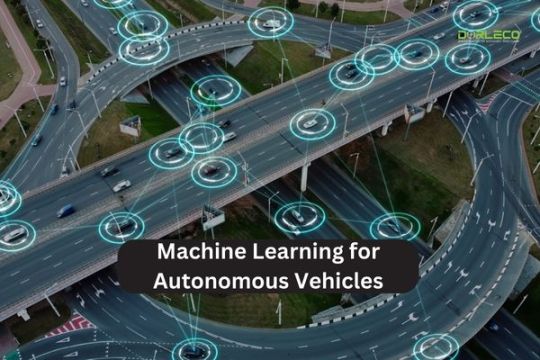
Introduction
Machine learning has greatly aided in developing and operating autonomous vehicles (AVs). Autonomous vehicles, also known as self-driving cars, can navigate and make decisions about how to drive on their own thanks to sensors, cameras, radar, and other equipment. The massive amount of data generated by these sensors is processed by machine learning algorithms to guarantee that the automobile is driven safely and effectively. This article provides a summary of machine learning’s use in autonomous vehicles.
1. Data gathering and sensors
Various sensors, including LiDAR, radar, cameras, and ultrasonic sensors, are included in autonomous cars.
These sensors gather information about the environment around the car, including the state of the roads, the presence of other vehicles, pedestrians, and traffic lights.
2. Data Preparation
Redundancy and noise are frequently present in raw sensor data. The data is cleaned and pre-processed using machine learning algorithms.
This could entail operations like data filtering, data alignment, and sensor fusion to merge data from several sensors.
3. Observation
For activities requiring perception, machine learning models are utilized to comprehend the surroundings of the vehicle.
Algorithms for object detection and recognition locate and categorize nearby items like other cars, people, and traffic signs.
Semantic segmentation classifies each pixel in an image or point cloud to help understand the road scene.
4. Regionalization
Orientation and position must be precisely determined by autonomous vehicles.
Utilizing methods like SLAM (Simultaneous Localization and Mapping), machine learning can aid in localization when combined with sensor data.
5. Planning and managing the path
The path and motion of the vehicle are planned using machine learning.
Algorithms for path planning assist the vehicle in deciding where to go and how to get there while avoiding hazards and obeying traffic regulations.
Control algorithms guarantee that the vehicle follows the intended path effectively and safely.
6. Reinforcement Learning:
For autonomous vehicles to learn from their interactions with the environment, reinforcement learning can be used.

7. Human-AI Interaction:
In autonomous vehicles, machine learning models can also be utilized to communicate with humans by comprehending their requests and explaining AI choices.
8. Data annotation and labeling:
For the purpose of training ML models in autonomous vehicles, high-quality labeled data is crucial.
The process of human annotators marking specific objects and events in sensor data is known to be labor-intensive and time-consuming.
Advantages of Machine Learning for Autonomous Vehicles
Autonomous vehicles (AVs) can benefit greatly from machine learning, which increases their capabilities, productivity, and safety. Some of the main benefits of applying machine learning to autonomous vehicles are as follows:
Enhanced Object Detection and Perception:
Large volumes of sensor data may be processed by ML algorithms, improving the detection and identification of items like pedestrians, cars, and barriers by AVs.
These algorithms improve the vehicle’s ability to perceive by adjusting to different lighting and weather situations.
Making decisions instantly:
Using historical data and their sense of the environment, AVs are able to make decisions in real-time.
When unexpected things happen, such as sudden stops or the sudden presence of pedestrians, they can respond fast.
Increased Safety:
Machine learning systems in autonomous vehicles allow them to anticipate potential dangers and take preventative action to avoid collisions.
Additionally, they can keep an eye on their surroundings constantly, lowering the possibility of driver inattention and fatigue.
Planning a path efficiently:
Algorithms for path planning based on machine learning can optimize routes to increase fuel efficiency, cut down on travel time, and lessen wear and tear on the vehicle.
AVs have the ability to dynamically change their routes based on the current flow of traffic.
Adaptive Learning:
AVs can adapt to their driving environments and learn from them thanks to machine learning. Based on facts from the real world, they may continuously enhance their performance and decision-making.
Reduced Human Error:
Human errors, which are a major factor in traffic accidents, such as distracted driving, fatigue, or poor judgment, are not common in autonomous vehicles.
Traffic Management:
By coordinating AVs and enhancing general traffic management, machine learning can be utilized to improve traffic flow.
To ease congestion, AVs can communicate with one other and the traffic infrastructure.
Reduced Fuel Consumption and Emissions:
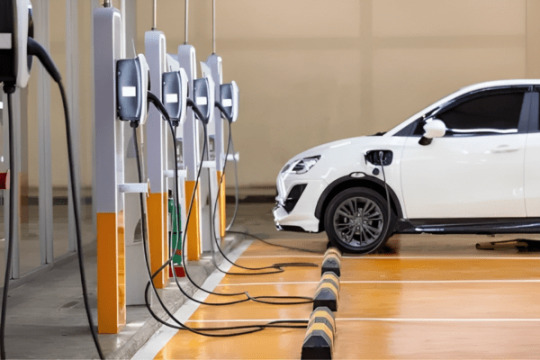
Disadvantages of Machine Learning for Autonomous Vehicles:
While machine learning has many benefits for autonomous vehicles (AVs), there are also a number of serious drawbacks and difficulties that come with its application in this setting:
Safety Concerns:
ML models are unreliable and susceptible to errors, raising questions about AV safety. A machine learning algorithm’s poor choice could have fatal repercussions.
Lack of Common Sense:
Lacking common sense reasoning, ML models may find it difficult to comprehend complicated, unstructured circumstances when driving.
Data Quality and Diversity:
High-quality and varied training data are essential to machine learning models. It might be difficult to ensure that data adequately depicts all conceivable circumstances, including uncommon and edge cases.
Data Annotation Costs:
Given the enormous amount of data needed for AV development, labeling and annotating training data for ML models can be expensive and time-consuming.
Data Privacy Concerns:
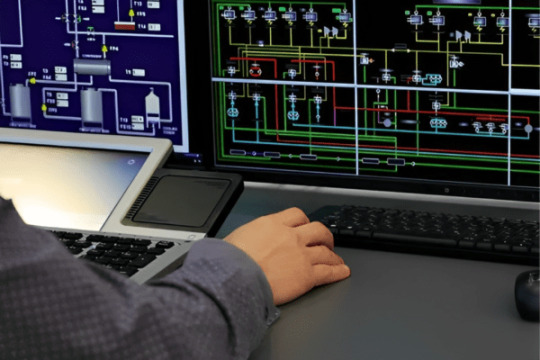
Adversarial Attacks:
Adversarial attacks, in which hostile actors try to trick or manipulate the algorithms by giving false sensor data, can affect machine learning models in AVs.
Limited Robustness:
ML models may not generalize well, and as a result, they may not perform well in unexpected or uncommon circumstances that differ from their training data.
Regulatory Challenges:
Machine learning-based AV development and deployment require navigating complicated regulatory environments, some of which may not yet be fully responsive to this cutting-edge technology.
Conclusion:
In conclusion, ML is a transformative technology that plays a central role in the development and operation of autonomous vehicles (AVs). Its integration brings a multitude of benefits and challenges to the world of transportation.
As the industry continues to evolve, it is essential to address these challenges and harness the advantages of ML in autonomous vehicles responsibly. Collaboration between industry stakeholders, regulators, researchers, and the public is crucial to ensure that AVs become a safe, efficient, and accessible mode of transportation that benefits society as a whole. While there are hurdles to overcome, the potential for ML in autonomous vehicles remains promising, with the prospect of revolutionizing the way we travel and enhancing road safety.
#AutonomousAerialVehicles#Drones#AAVs#KeylessEntry#HybridVehicle#StartSystems#dorleco#controlsystem#ADAS#eMobilityControls#stroke#automotive#controlunit#PowertrainControl#ConnectedAutonomousVehicles
0 notes
Text
Autonomous Aerial Vehicles (Drones)
October 17, 2023
by dorleco
with no comment
Autonomous Vehicle Technology
Edit

Introduction
Drones, or autonomous aerial vehicles (AAVs), have grown in popularity in recent years due to their adaptability and variety of uses. The military usage of these unmanned aircraft has given way to a number of civilian and business uses. The main features of AAVs, including their types, components, uses, and some of the difficulties they offer, will be covered in this introduction.
1. Different AAV types
Autonomous Aerial Vehicles come in a variety of forms, each created for particular purposes and settings. The most typical categories are:
Multirotor Drones: These drones, which often have four or more rotors, are distinguished by their stability, agility, and controllability. They are frequently employed for short-distance deliveries, surveillance, and aerial photography.
Fixed-Wing Drones: These drones have fixed wings and propellers, making them resemble conventional airplanes. They are frequently employed for jobs like mapping, agriculture, and aerial surveying since they are more effective for traveling large distances.
Hybrid Drones: Providing flexibility for varied applications, hybrid drones integrate aspects of both multirotor and fixed-wing designs. They can fly forward efficiently like fixed-wing aircraft and can take off and land vertically like multi-rotors.
Single-rotor and coaxial helicopters: Though less prevalent, these drones excel at a variety of specialized jobs, including heavy lifting and aerial filming.
2. Important Elements:
Autonomous Aerial Vehicles are made up of several crucial parts:
Propulsion System: The drone’s propulsion system consists of the motors, rotors, or engines that give it lift and forward motion.
Flight Controller: An onboard computer that regulates the speed of each motor or rotor to steady and control the drone’s flight.
GPS receiver: Offers location information and aids in self-driven navigation.
Sensors: To ensure stable flying and collision avoidance, drones are outfitted with a variety of sensors, including gyroscopes, accelerometers, barometers, and obstacle avoidance sensors.
Communication System: Drones frequently interact with ground stations or other drones to coordinate missions and are controlled remotely via radio signals.
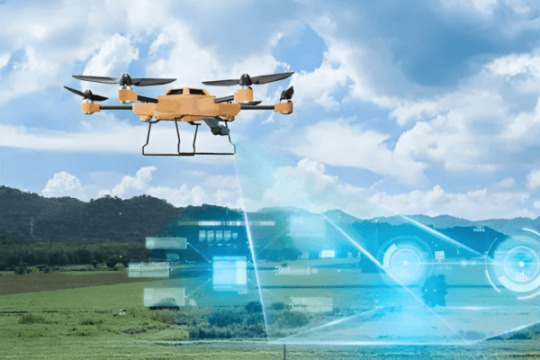
Power Source: Rechargeable lithium-polymer or lithium-ion batteries are used to power the majority of drones.
3. Applications
Autonomous Aerial Vehicles have numerous uses in a variety of sectors, including:
Photography and Videography: Aerial photography and cinematography for movies, real estate, and events are examples of photography and videography.
Agriculture: Precision farming, pesticide application, and crop monitoring.
Search and Rescue: Supporting efforts to find missing people and provide disaster aid.
Infrastructure Inspection: Inspection of the infrastructure, including pipelines, bridges, and electricity lines.
Environmental monitoring: keeping an eye on deforestation, climate change, and wildlife.
Package Delivery: Businesses like UPS and Amazon are looking into drone delivery options.
Security and surveillance: Keeping an eye on vast areas for security reasons.
Mapping and Surveying: Producing detailed 3D maps and measuring land.
4. Difficulties
Autonomous Aerial Vehicles are faced with a number of difficulties as they develop:
Regulation: Different regions have different laws and rules, which can make drone operations challenging.
Safety: Collisions, problems, and loss of control can result in mishaps that put persons and property in danger.
Privacy Issues: The possibility of intrusive surveillance is a major issue.
Airspace Management: To prevent collisions, drone flight paths must be coordinated with those of other aircraft.
Battery Life: For the majority of drones, a short battery life limits flight time and range.
Impact on the environment: Particularly in urban areas, noise pollution, and environmental concerns might be problems.
Benefits of Autonomous Aerial Vehicles (Drones)
Drones, or autonomous aerial vehicles (AAVs), provide numerous advantages in a variety of fields and applications. The following are some of the main benefits of Autonomous Aerial Vehicles:
Cost-Effective: AAVs may frequently complete jobs more affordably than conventional techniques. Drones, for instance, may more precisely administer pesticides and monitor crops in agriculture, minimizing the need for expensive machinery and physical labor.
Time Efficiency: AAVs are capable of doing jobs swiftly and effectively. For example, they can undertake aerial photography, evaluate infrastructure, or survey enormous amounts of land in a fraction of the time it would take using conventional techniques.
Safety: By using AAVs in dangerous or hard-to-reach places, the risk to human employees is reduced. For instance, they can carry out perilous search and rescue missions, and inspect electricity lines, and pipelines.
Environmental Benefits: When compared to conventional aircraft or ground vehicles, drones have a lesser environmental impact. They are more environmentally friendly because they frequently use electric power sources, produce fewer pollutants, and have lower noise levels.
Precision and Accuracy: In industries like agriculture, where precise crop spraying and monitoring can improve yields and save waste, AAVs’ high precision and accuracy in task execution are essential.
Remote sensing and surveillance: Drones can continuously observe a region, improving security and monitoring capabilities. They are employed in disaster management, animal monitoring, and border security.
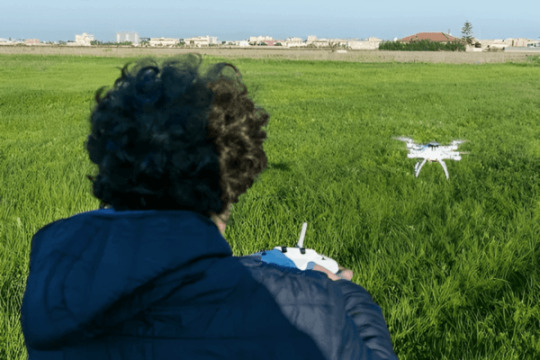
Flexibility and Adaptability: AAVs are adaptable to a wide range of applications since they may be fitted with a variety of sensors and payloads. They don’t require major changes to be configured for various jobs.
Aid in Emergencies: Drones can be quickly deployed in disaster-affected areas to survey damage, find survivors, and provide supplies that are necessary in an emergency. They are essential resources for search and rescue operations.
Drawbacks of Autonomous Aerial Vehicles (Drones)
Drones, or autonomous aerial vehicles (AAVs), have many advantages but also a number of disadvantages and difficulties. To use drones effectively, it’s imperative to be aware of these restrictions. The following are some AAV drawbacks:
Regulatory Obstacles: AAVs must adhere to stringent rules in several nations. These rules encompass things like required licenses, no-fly zones, and flight height. It might be difficult to follow these regulations, particularly for industrial and recreational users.
Safety Issues: Drones can provide dangers to safety both on the ground and in the air. Inexperienced pilots run the risk of endangering both persons and property when they unintentionally cause accidents, such as collisions with other planes or buildings.
Privacy Concerns: Drones with cameras and other sensors pose the risk of invading people’s personal space. Significant issues include the gathering of personal data and unauthorized surveillance. It can be difficult to strike a compromise between drones’ advantages and people’s right to privacy.
Limited Payload Capacity: The majority of consumer-grade drones have a payload capacity that limits their ability to do specific jobs, such as carrying large scientific instruments or heavy cargo.
Short Battery Life: Drones have a short battery life, which for consumer versions typically falls between 20 and 40 minutes. This limits their operating range and duration and necessitates frequent charging.
Weather Sensitivity: A drone’s capacity to fly safely and effectively might be restricted by unfavorable weather conditions, such as high winds, heavy rain, and extreme temperatures.
Maintenance and Repairs: Regular maintenance is necessary for drones, and any faults may call for pricey repairs. Downtime and increased expenses may result from this.
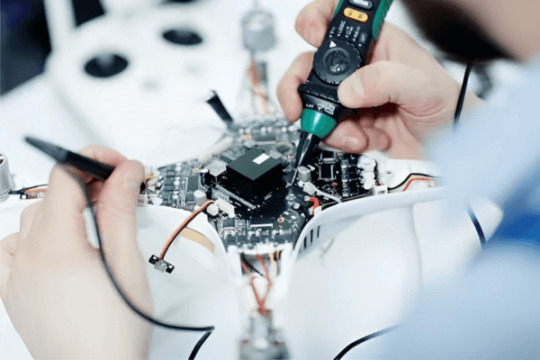
Complex Operation: Despite the fact that current drones are easier to handle, they still need a certain amount of expertise to operate efficiently. For novices, learning how to fly and operate a drone might be difficult.
Conclusion:
In conclusion, Autonomous Aerial Vehicles (AAVs), more commonly known as drones, have emerged as versatile tools with a wide range of applications and the potential to bring transformative changes to various industries. The benefits of AAVs, including cost-effectiveness, time efficiency, safety, and environmental advantages, are evident and compelling. These devices have the power to revolutionize fields such as agriculture, infrastructure inspection, surveillance, and emergency response, among others.
However, Autonomous Aerial Vehicles are not without their drawbacks and challenges. Regulatory complexities, safety concerns, privacy issues, and operational limitations are factors that demand careful consideration and responsible usage.
The future of AAVs hinges on a harmonious balance between realizing their full potential and addressing these challenges. As technology advances and regulations evolve, drones will continue to play an increasingly significant role in our lives. To harness the full spectrum of benefits AAVs offer, it is crucial to emphasize education, ethical practices, and responsible governance. With the right approach, drones can indeed be transformative tools, enhancing efficiency, safety, and our ability to explore and interact with the world from a new perspective.
#AutonomousAerialVehicles#Drones#AAVs#KeylessEntry#HybridVehicle#StartSystems#dorleco#controlsystem#ADAS#eMobilityControls#stroke#automotive#controlunit#PowertrainControl#ConnectedAutonomousVehicles
0 notes